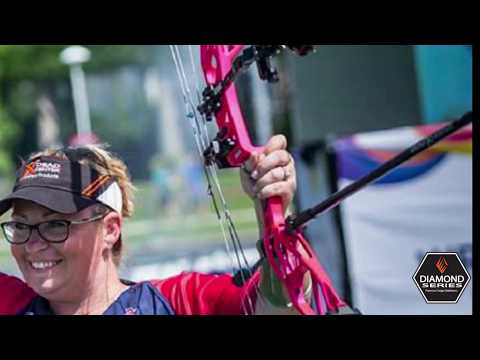Just how to Choose the Right Bow Stabilizer: Specialist Tips and Recommendations
Wiki Article
Maximize Your Archery Precision With These Bow Stabilizer Methods
One vital element that can considerably influence your efficiency is the appropriate application of bow stabilizers. Whether you are a seasoned archer looking to fine-tune your skills or a newcomer excited to boost your precision, mastering these bow stabilizer strategies might be the key to hitting your mark with unmatched consistency.Benefits of Making Use Of Bow Stabilizers
Utilizing bow stabilizers can substantially improve an archer's accuracy and overall performance by lessening bow torque and vibration. Bow torque, triggered by the unequal distribution of weight in the bow, can cause incongruities in shot placement. By attaching a bow stabilizer, the weight is redistributed, decreasing the impacts of torque and aiding the archer attain an extra regular shot. In addition, bow stabilizers dampen resonance, which not just improves the convenience of capturing yet also avoids the bow from jumping upon release, therefore aiding in preserving appropriate objective.Additionally, bow stabilizers can assist in holding the bow constant, especially during gusty conditions or when firing from longer distances. The added weight at the front of the bow provides stability and balance, permitting the archer to focus on intending without the distraction of bow motion. In general, the benefits of making use of bow stabilizers prolong past just precision, enhancing the archer's experience and efficiency in numerous shooting circumstances.
Picking the Right Bow Stabilizer
Selecting the ideal bow stabilizer is critical for optimizing your archery tools and enhancing shooting efficiency. Much heavier stabilizers can help reduce bow torque and absorb even more resonance, leading to a steadier goal.
Lastly, think about the layout of the stabilizer. Some stabilizers come with adjustable weights or dampeners that permit you to customize the balance and feeling of your bow. Ultimately, choosing the appropriate bow stabilizer includes discovering a balance in between weight, product, length, and style to improve your shooting accuracy and general performance.
Correct Installment Techniques
To guarantee optimum performance and security in archery, mastering proper installment methods for your bow stabilizer is important. The very first step in installing a bow stabilizer is to determine the appropriate placement on your bow.Next, safely connect the stabilizer to the bow making use of the proper mounting equipment. It is essential to tighten up the stabilizer well to stop any tottering during shots. Some stabilizers come with flexible weights that can be added or removed to fine-tune the balance of your bow. discover this Try out various weight setups to locate the ideal balance that fits your shooting style.

Adjusting Stabilizer Weight and Length
After making sure the correct installment of your bow stabilizer, the next action includes changing the weight and size to maximize its performance in boosting archery accuracy. The weight of the stabilizer plays a critical other role in decreasing bow movement during the shot cycle. Including weight to the stabilizer can help wet vibrations and improve security, leading to more exact and regular shots. On the other hand, lowering the weight can boost maneuverability, which is valuable for scenarios requiring fast target purchase.When it involves stabilizer size, discovering the appropriate equilibrium is vital. A longer stabilizer can give greater security by raising the distance in between the bow and the weight at the end of the stabilizer. This added range enhances the stabilizing effect, particularly in windy conditions or when contending longer distances. Alternatively, a shorter stabilizer supplies much more maneuverability and may be favored by archers who value dexterity and fast motions during shooting.
Advanced Stabilizer Tuning Tips
Achieving optimal bow security and precision in archery requires a nuanced method to sophisticated stabilizer tuning. Advanced stabilizer tuning involves fine-tuning different elements to improve the bow's equilibrium, reduce resonance, and boost general precision.Another essential aspect of advanced stabilizer adjusting is maximizing the damping buildings of the stabilizer system. This can be attained by incorporating added wetting accessories such as rubber dampeners or harmonic stabilizers to better minimize vibration and sound. Moreover, exploring various products for the stabilizer construction, such as carbon fiber or light weight aluminum, can additionally affect the bow's performance resource by altering its weight distribution and tightness. By thoroughly make improvements these advanced stabilizer elements, archers can maximize their accuracy and uniformity on the range or in competitors.
Final Thought
In verdict, making the most of archery precision can be achieved with the appropriate option, installation, and adjustment of bow stabilizers. On the whole, integrating bow stabilizers right into archery method can lead to better efficiency and increased accuracy.Making use of bow stabilizers can considerably improve an archer's accuracy and general performance by minimizing bow torque and resonance. Longer stabilizers offer higher stability and balance, particularly for long-distance shooting, while much shorter stabilizers use even more versatility and are simpler to navigate in tight spaces (bow stabilizer). Carbon fiber stabilizers are resilient and lightweight, while light weight aluminum stabilizers are robust and supply exceptional vibration wetting
A longer stabilizer can give better security by raising the distance between the bow and the weight at the end of the stabilizer.Another important element of sophisticated stabilizer tuning is optimizing the damping residential properties of the stabilizer system.
Report this wiki page